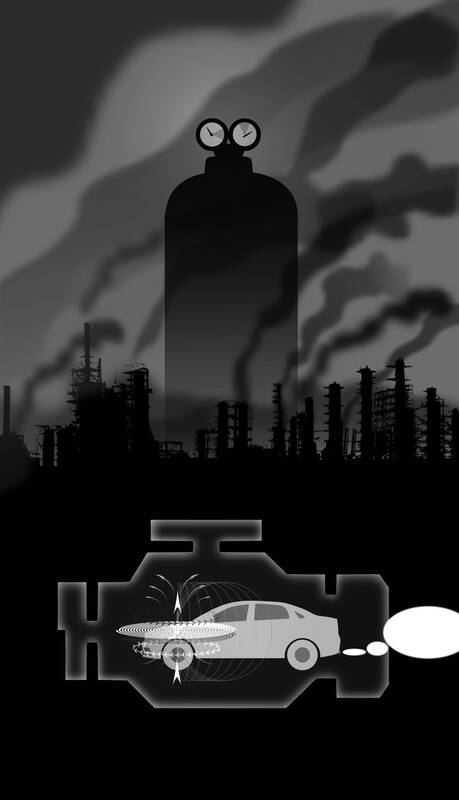Earlier this year, Chinese firm Contemporary Amperex Technology Co, the world’s largest battery maker, unveiled an electric vehicle (EV) battery capable of delivering a remarkable 520km of driving range after just five minutes of charging. The announcement came a month after BYD Co, China’s leading EV manufacturer, launched its own ultra-fast charging system. In solar, too, the numbers are staggering: Chinese firms could now produce more than 1.2 terawatts of solar panels annually.
These feats are a product of the global green tech race, which China leads by a wide margin. Some frame this as a problem of Chinese oversupply. However, another way of looking at it is that the rest of the world is not deploying these technologies fast enough. While China’s green manufacturing engine is running at high speed, others are idling.
Given this, Europe confronts a strategic choice. It could respond with defensive industrial policy: securing supply chains, raising tariffs and futilely attempting to catch up. Or it could forge a shared competitiveness agenda, which would allow Europe to use its strengths — rulemaking, coalition building, and norm setting — to shape the deployment environment, define standards and guide green investment frameworks.

Illustration: Yusha
Despite the breakdown in ties between the EU and China over the past few years, the idea of collaborating on clean trade and investment is not so far-fetched. The climate transition is the defining political and economic challenge of the 21st century. And on this front, the EU and China have become interdependent: If Europe pumps the breaks on decarbonization, Chinese assets could be stranded, whereas China could face retaliation if it refuses to collaborate or align with global norms. The question now is whether they could constructively shape their interdependence.
Taking advantage of the narrow window for establishing a climate partnership requires a deal that promotes each government’s core economic interests. For the EU, that means reducing reliance on Chinese imports while moving up the value chain. For China, it means maintaining access to a high-value export market amid a shifting global trade environment. Success requires pragmatism on both sides.
Whether the EU and China could cooperate effectively depends on several factors. First, they must reach an agreement on local content requirements. The EU should target domestic production of at least 40 percent of green technologies by 2030 — not just low-paid assembly, but higher-value activities such as research and development (R&D) — to create jobs and build resilience.
Second, any partnership must open the door for joint ventures, which have helped China reach the technological frontier and are already emerging in the EU battery and automotive sectors. If correctly structured, such partnerships could drive mutual gains while building cooperation into long-term industrial strategies.
Third, trade measures must be carefully calibrated. While the EU has imposed tariffs as high as 45.3 percent on Chinese EVs, import barriers alone cannot close competitiveness gaps. At best, they could complement more strategic policy efforts such as local content rules and industrial partnerships. If poorly implemented, they could further weaken Europe’s technological position, rather than buying it time to catch up with China.
Fourth, there is a need for structured mobility schemes. Some EU member states have begun restricting visas for Chinese engineers. This is short-sighted. Enabling European firms to host Chinese talent and vice versa would ensure that R&D and design, not just final assembly, occur in Europe.
Ultimately, finding a way to collaborate on decarbonization efforts would yield economic and geopolitical dividends for both sides. Collaboration with China would strengthen the EU’s resilience, bolster its industrial sector and cement the bloc as a leader in clean tech. China would be able to offload surplus green goods, secure market access and signal to the world that, while the US is retreating from climate action, it remains dedicated to green growth.
The EU and China are more aligned than many realize. Both are net fossil fuel importers. Both are major producers of zero carbon technologies, and thus have an interest in sustaining global demand for green products. And, amid growing uncertainty, both have bet on the energy transition as the most viable path to competitiveness and innovation.
This window of opportunity would not stay open forever. As scientific and political timelines converge, the coming months are critical to keep the world on track to meet the Paris climate agreement’s 1.5°C goal. The recent EU-China Summit laid the groundwork for closer cooperation on decarbonization. However, as pressure mounts to submit 2035 climate targets ahead of November’s UN Climate Change Conference in Belem, Brazil, the next meeting of the Council of the EU in September, under the Danish presidency, would be pivotal.
With many European countries — most notably France — pushing for a clearer industrial and investment plan before committing to a strong 2035 emissions reduction target, EU heads of state and government must devise a framework for transforming the industry at the September meeting. An important part of that plan would be how the bloc engages with China.
By coalescing around the belief that the new must be built before the old could be phased out, Europe is starting to follow China’s strategy. However, to do so, it must also learn from China’s coherent and systematic execution, which centers on long-term planning across the entire clean tech value chain.
China, too, must step up with an ambitious 2035 emissions target that is aligned with its 2060 net zero goal — meaning a roughly 30 percent reduction from peak emissions, which are expected to be reached this decade. This would bolster its international credibility and help create space for a strong EU target.
Europe and China have wagered their future on green growth. To make it a winning bet and capture the full benefits of decarbonization, they must find common cause on clean trade and investment — one of the few areas where strategic self-interest and global public goods still converge.
Emmanuel Guerin is a fellow and special adviser to the CEO at the European Climate Foundation. Bernice Lee is a distinguished fellow and special adviser at Chatham House.
Copyright: Project Syndicate

In the past month, two important developments are poised to equip Taiwan with expanded capabilities to play foreign policy offense in an age where Taiwan’s diplomatic space is seriously constricted by a hegemonic Beijing. Taiwan Foreign Minister Lin Chia-lung (林佳龍) led a delegation of Taiwan and US companies to the Philippines to promote trilateral economic cooperation between the three countries. Additionally, in the past two weeks, Taiwan has placed chip export controls on South Africa in an escalating standoff over the placing of its diplomatic mission in Pretoria, causing the South Africans to pause and ask for consultations to resolve
An altercation involving a 73-year-old woman and a younger person broke out on a Taipei MRT train last week, with videos of the incident going viral online, sparking wide discussions about the controversial priority seats and social norms. In the video, the elderly woman, surnamed Tseng (曾), approached a passenger in a priority seat and demanded that she get up, and after she refused, she swung her bag, hitting her on the knees and calves several times. In return, the commuter asked a nearby passenger to hold her bag, stood up and kicked Tseng, causing her to fall backward and
In South Korea, the medical cosmetic industry is fiercely competitive and prices are low, attracting beauty enthusiasts from Taiwan. However, basic medical risks are often overlooked. While sharing a meal with friends recently, I heard one mention that his daughter would be going to South Korea for a cosmetic skincare procedure. I felt a twinge of unease at the time, but seeing as it was just a casual conversation among friends, I simply reminded him to prioritize safety. I never thought that, not long after, I would actually encounter a patient in my clinic with a similar situation. She had
A recent trio of opinion articles in this newspaper reflects the growing anxiety surrounding Washington’s reported request for Taiwan to shift up to 50 percent of its semiconductor production abroad — a process likely to take 10 years, even under the most serious and coordinated effort. Simon H. Tang (湯先鈍) issued a sharp warning (“US trade threatens silicon shield,” Oct. 4, page 8), calling the move a threat to Taiwan’s “silicon shield,” which he argues deters aggression by making Taiwan indispensable. On the same day, Hsiao Hsi-huei (蕭錫惠) (“Responding to US semiconductor policy shift,” Oct. 4, page 8) focused on